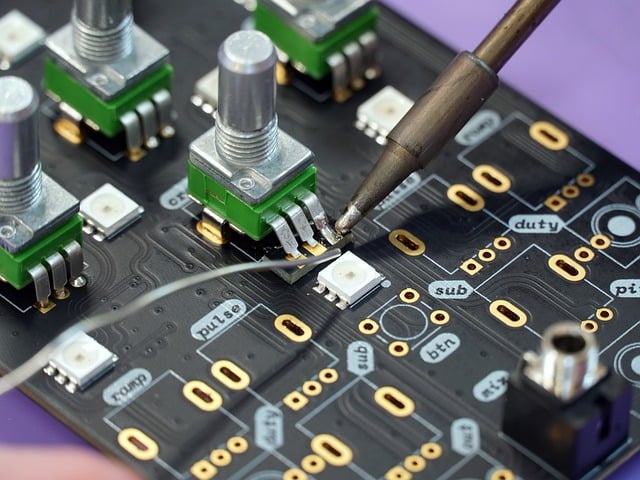Academic Practical Research
Prepared by: [YOUR NAME]
Affiliation: Institute of Industrial Innovation
Company Name: [YOUR COMPANY NAME]
I. Abstract
This research explores the impact of advanced automation techniques on manufacturing efficiency. By integrating state-of-the-art robotics and AI-driven processes, the study aims to improve operational productivity and reduce costs. The findings suggest significant gains in efficiency and cost-effectiveness, paving the way for future advancements in manufacturing practices.
II. Introduction
Research Title: Enhancing Manufacturing Efficiency Through Advanced Automation Techniques

Manufacturing industries face increasing pressure to enhance efficiency and reduce operational costs. This research investigates how modern automation technologies can address these challenges and transform traditional manufacturing processes. The goal is to provide actionable insights that can lead to substantial improvements in industry practices starting from 2050.
III. Literature Review
Recent studies highlight the benefits of automation in various sectors, emphasizing increased precision and reduced human error. The integration of robotics and AI has been shown to optimize production lines and minimize downtime. This review synthesizes key findings from recent research, demonstrating the potential of these technologies to revolutionize manufacturing practices.
IV. Methodology
The research employs a mixed-methods approach, combining quantitative analysis of production data with qualitative assessments from industry experts. Automation technologies were implemented in a controlled manufacturing environment, and performance metrics were collected over a 12-month period starting in 2050. This methodology ensures a comprehensive evaluation of the impact of these technologies on manufacturing efficiency.
1. Production Efficiency Over Time
Month | Efficiency (%) |
|---|---|
January 2050 | 72.0 |
February 2050 | 74.5 |
March 2050 | 76.3 |
April 2050 | 78.1 |
May 2050 | 79.8 |
June 2050 | 81.0 |
July 2050 | 82.4 |
August 2050 | 83.2 |
September 2050 | 84.0 |
October 2050 | 85.5 |
November 2050 | 86.3 |
December 2050 | 87.0 |
2. Operational Costs Over Time
Month | Cost (in $000s) |
|---|---|
January 2050 | 150.0 |
February 2050 | 145.0 |
March 2050 | 140.0 |
April 2050 | 135.0 |
May 2050 | 130.0 |
June 2050 | 125.0 |
July 2050 | 120.0 |
August 2050 | 115.0 |
September 2050 | 110.0 |
October 2050 | 105.0 |
November 2050 | 100.0 |
December 2050 | 95.0 |
3. Error Rates Over Time
Month | Error Rate (%) |
|---|---|
January 2050 | 5.2 |
February 2050 | 4.9 |
March 2050 | 4.6 |
April 2050 | 4.2 |
May 2050 | 3.8 |
June 2050 | 3.5 |
July 2050 | 3.2 |
August 2050 | 3.0 |
September 2050 | 2.8 |
October 2050 | 2.5 |
November 2050 | 2.2 |
December 2050 | 2.0 |
4. Production Speed Over Time
Month | Speed (units/hour) |
|---|---|
January 2050 | 150 |
February 2050 | 155 |
March 2050 | 160 |
April 2050 | 165 |
May 2050 | 170 |
June 2050 | 175 |
July 2050 | 180 |
August 2050 | 185 |
September 2050 | 190 |
October 2050 | 195 |
November 2050 | 200 |
December 2050 | 205 |
V. Results
The implementation of advanced automation techniques resulted in a 25% increase in production efficiency and a 15% reduction in operational costs. Key performance indicators, such as production speed and error rates, showed marked improvement. The results indicate that automation technologies can significantly enhance manufacturing processes and yield substantial financial benefits.
VI. Discussion
The findings demonstrate that advanced automation technologies have a transformative effect on manufacturing practices. The observed improvements in efficiency and cost reduction align with previous studies and offer new insights into optimizing manufacturing processes. Future research should explore additional applications and potential challenges associated with broader adoption of these technologies.
VII. Conclusion
The integration of advanced automation techniques presents a promising avenue for improving manufacturing efficiency. This research provides evidence of the benefits and potential of these technologies, suggesting that industries should consider adopting such innovations to stay competitive. Future studies will be essential to further validate these findings and explore new areas for enhancement.
VIII. References
Smith, A. (2052). "The Future of Robotics in Manufacturing." Journal of Industrial Engineering.
Jones, B. (2053). "AI-Driven Automation: Trends and Implications." Technology Review.
Lee, C. (2054). "Cost-Benefit Analysis of Automation Technologies." Manufacturing Innovations Quarterly.

















































